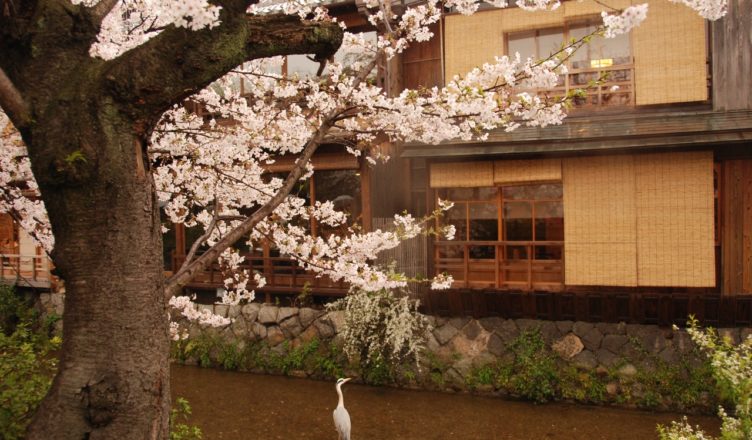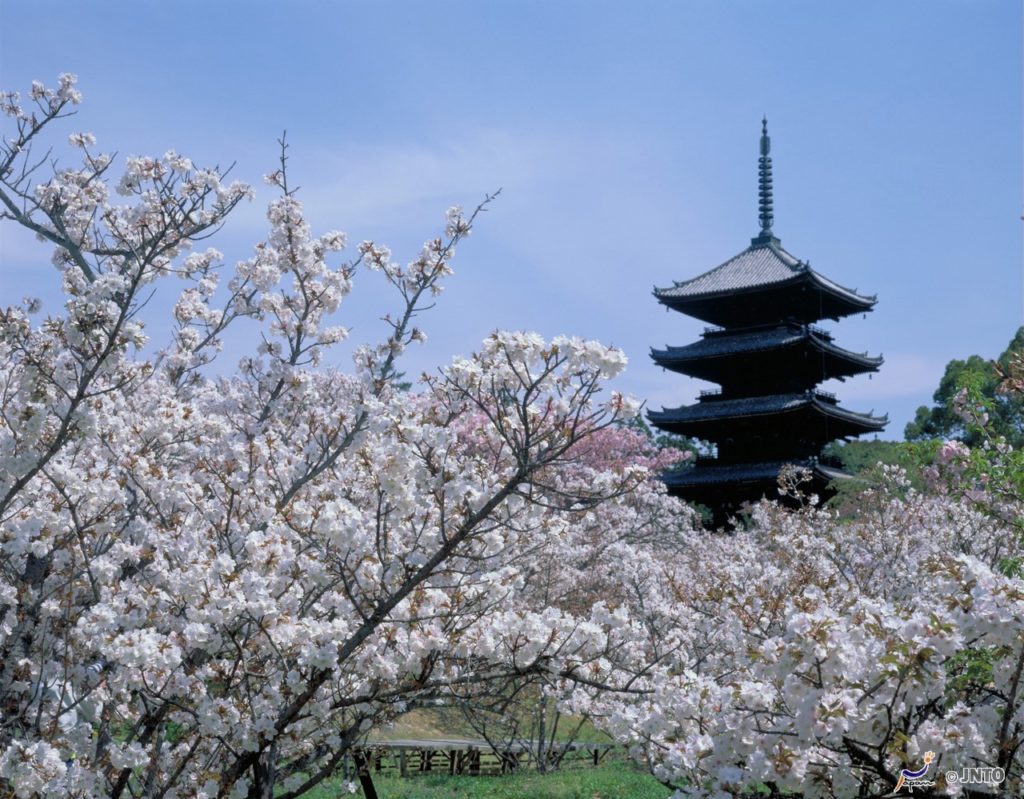The Japanese love their fairy-tale cherry-blossoms, sakura, and admiring the fluffy pink-and-white clouds of cherry-blossoms is called hanami – the hanami tradition dates back many hundreds of years although it used to be just for the Imperial court – nowadays everyone enjoys it. It’s a popular tradition in springtime to have a little party in the park under the cherry trees with a picnic and a glass of sake or beer, or to stroll along the romantic riverbanks or streets where the trees are illuminated by paper lanterns at night. The most common blossoms are yedoensis, or somei yoshino, white with a tinge of pink, although there are about 200 varieties native to Japan, and the trees do not bear fruit. The sakura themselves last only a couple of weeks before the petals wither and fall, but to the Japanese, their great beauty, abundance and fragility are representative of life itself, and, above all, its shortness.
Typically the cherry-blossom season starts in the southern regions such as Okinawa in January, moving northwards over the following weeks to reach Kyoto and Tokyo in late March, and it lasts for barely a couple of weeks in any one place.
Hanami in Tokyo
Shinjuku Gyoen is not far from Shinjuku Station, and it also has 1000 trees but of many different varieties – there is an entrance fee payable here of 200 yen.
Hanami in Kyoto
Ninnaji Temple has late-flowering sakura, and Hirano Shrine has hosted its own cherry blossom festival for a thousand years, and the shrine is only a 10-minute walk from the Golden Pavilion. Kiyomizu and Kodaiji Temples are specially illuminated at dusk during the blossom time, entrance fees are around 500 yen.
If you are planning to visit Japan before, during or after cherry blossom please contact Magical Japan by email [email protected] or by phone – from UK 0161 440 7332 Alternatively you can check selection of group and individually tours to Japan on our website www.magicalexplorer.co.uk

